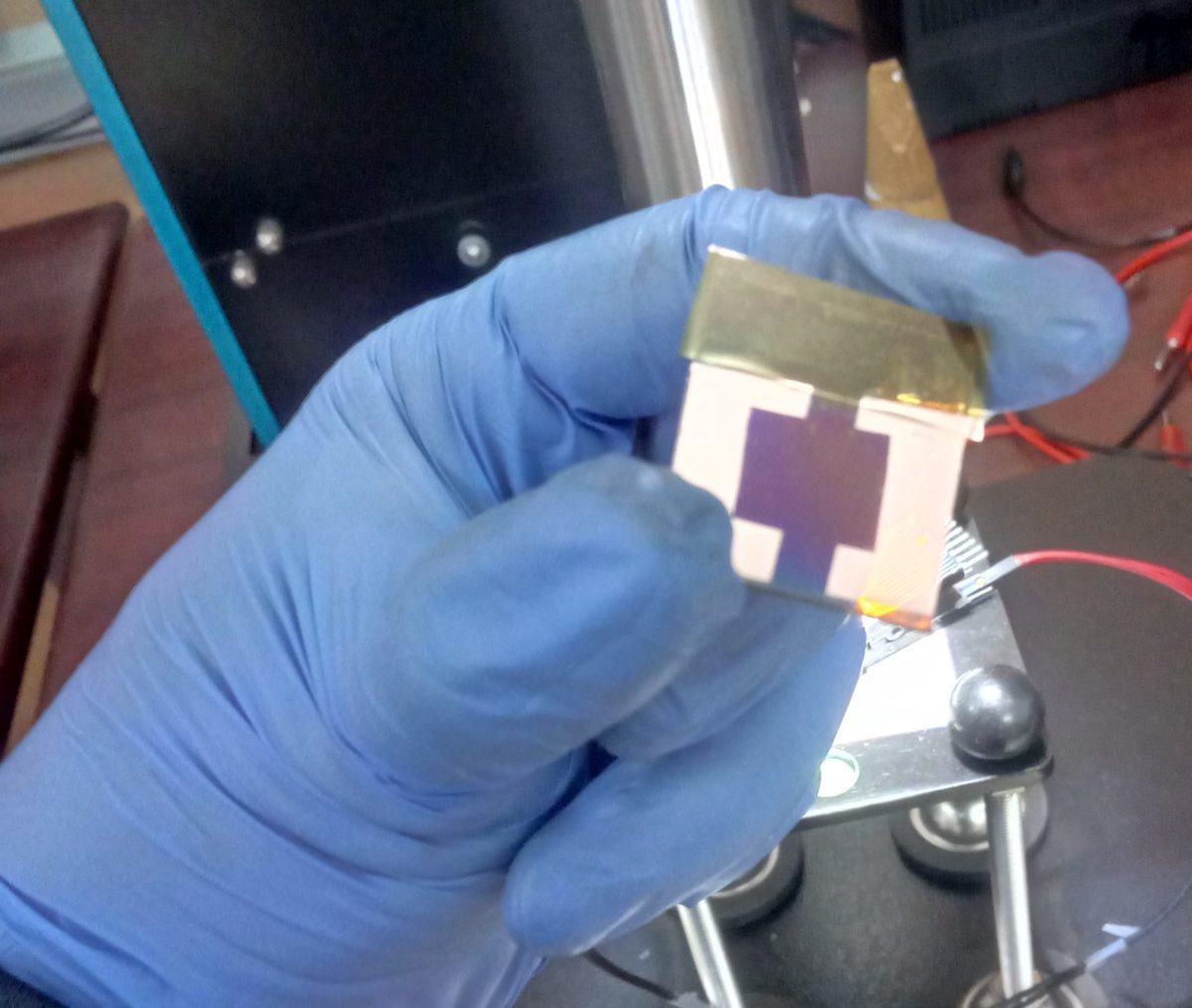Researchers from the Indian Institute of Technology Bhilai have fabricated a four-terminal (4T) perovskite/silicon tandem solar cell that relies on a large-area semi-transparent perovskite cell with a metal contact based on copper instead of expensive gold for both the 4T device's top and bottom cells.
“Copper has been used with the aim of reducing the cell's overall cost,” researcher Manas Ranjan Samantaray told pv magazine. “A sandwich structure of gold-copper-gold is also being investigated to reduce cost without compromising the stability.”
The cm2 cell used for the top and bottom cells were presented by the same research group in September and is fabricated via a two-step spin-coating technique with a fluorine-doped tin oxide (FTO) substrate; a methylammonium lead iodide (MAPbI3) perovskite layer sandwiched between a titanium oxide (TiO2) electron transport layer (ETL) and a hole transport layer (HTL) made of Spiro-OMeTA; and a copper conducting electrode. “Our semi-transparent top cell allows the passage of light above 750 nm and it is suitable for use with poly and mono-Si PV cells and modules,” Ranjan Samantaray added.

Image: Indian Institute of Technology Bhilai
4T solar cells with different configurations were developed by the Indian scientists. One was built with the above-mentioned large-area semi-transparent perovskite solar cells with active areas of 1 cm2 and 2 cm2, which showed a power conversion efficiency of 5.07% and 4.10%, respectively, and a carrier selective contact (CSC)-based silicon solar cell with an efficiency of 3.42%. Another device was fabricated with the same top and bottom cells and a commercial crystalline silicon cell with an efficiency of 14.11%.
Popular content
The first solar cell achieved a power conversion efficiency of 7.31%, which is higher than individual cell efficiencies, and the second reached 15.15%, which is a value that the researchers described as comparable to existing devices utilizing costlier materials like gold and indium tin oxide (ITO). “In the future, we will demonstrate the stability of the devices, and a further few studies are required to step forward for large area module design,” Ranjan Samantaray stated.
The 4T tandem solar cell was described in the paper “Four-terminal perovskite/silicon tandem solar cells based on large-area perovskite solar cells utilizing low-cost copper semi-transparent electrode,” published in Applied Physics A.
This content is protected by copyright and may not be reused. If you want to cooperate with us and would like to reuse some of our content, please contact: editors@pv-magazine.com.



By submitting this form you agree to pv magazine using your data for the purposes of publishing your comment.
Your personal data will only be disclosed or otherwise transmitted to third parties for the purposes of spam filtering or if this is necessary for technical maintenance of the website. Any other transfer to third parties will not take place unless this is justified on the basis of applicable data protection regulations or if pv magazine is legally obliged to do so.
You may revoke this consent at any time with effect for the future, in which case your personal data will be deleted immediately. Otherwise, your data will be deleted if pv magazine has processed your request or the purpose of data storage is fulfilled.
Further information on data privacy can be found in our Data Protection Policy.